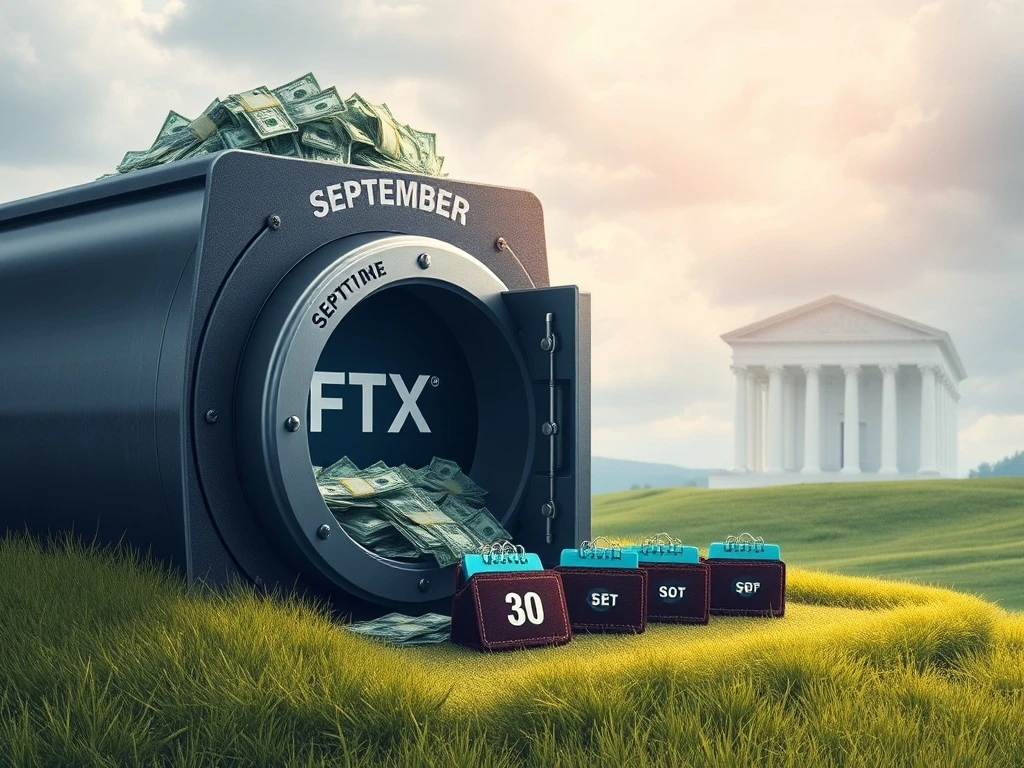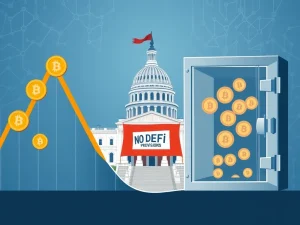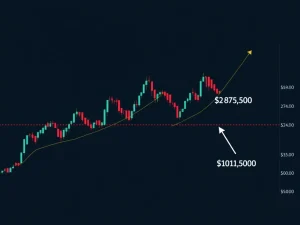FTX Creditor Payouts: Unlocking $1.9 Billion in Crucial Distributions by September 30

The crypto world is buzzing with significant news for those impacted by the FTX collapse. A major stride towards resolution has been announced, with FTX creditor payouts totaling $1.9 billion set to commence on September 30, 2025. This crucial development marks a turning point for thousands of individuals and entities eagerly awaiting the return of their digital assets, signaling a powerful step forward in one of crypto’s most complex bankruptcy cases.
What’s Driving the Latest FTX Creditor Payouts?
This substantial distribution is a direct result of a recent U.S. bankruptcy court decision that approved a significant reduction in FTX’s disputed claims reserve. Previously held at $6.5 billion, the reserve has been cut by $2.2 billion to $4.3 billion, effectively unlocking a considerable portion of funds for distribution. This move is a clear indicator of progress in the broader FTX recovery plan, which has been meticulously structured to navigate the complex aftermath of the exchange’s collapse.
This upcoming payout represents the third round of repayments since February, underscoring the structured and phased approach FTX is taking towards its financial recovery. The court’s approval to release these funds addresses a critical bottleneck, allowing the estate to move forward with returning value to those who suffered losses. It’s a testament to the ongoing efforts to bring clarity and resolution to a situation that has cast a long shadow over the crypto industry.
Key Milestones for the Payouts:
- Reserve Reduction: The disputed claims reserve was reduced from $6.5 billion to $4.3 billion, freeing up $2.2 billion.
- Payout Amount: A total of $1.9 billion is slated for distribution in this round.
- Payout Commencement: Funds will begin to be distributed on September 30, 2025.
- Eligibility Record Date: August 15, 2025, is the deadline for creditors to submit necessary documentation to determine eligibility.
Navigating Crypto Bankruptcy Claims: Eligibility and Distribution Channels
For creditors, understanding the eligibility criteria for these crypto bankruptcy claims is paramount. This round of distributions will prioritize claimants whose requests are no longer classified as disputed. The August 15, 2025, record date is critical, as it dictates who qualifies for this specific payout, requiring all necessary documentation to be submitted by this deadline.
To facilitate the distribution, FTX is leveraging established third-party platforms. Creditors can expect to receive their funds through services like BitGo, Kraken, and Payoneer. While these platforms offer robust and secure channels for transactions, they also come with a crucial requirement: Know Your Customer (KYC) compliance. Unverified users may face exclusion from this distribution, highlighting the ongoing importance of regulatory adherence even in a bankruptcy context.
Sunil Kavuri, a prominent FTX creditor, noted that this round might include partial payments for claims exceeding $50,000, offering some relief to larger claimants. The payouts are specifically targeting fifth- and sixth-tier creditors, meaning higher-priority obligations, such as those to regulatory agencies or secured lenders, are not part of this particular distribution phase. This tiered approach is common in bankruptcy proceedings, ensuring that different classes of creditors are addressed systematically.
The Challenge of Disputed Crypto Claims and Jurisdictional Hurdles
Despite the significant progress, approximately $4.3 billion in claims still remain under dispute. A substantial portion of these disputed crypto claims originates from restricted jurisdictions, adding another layer of complexity to the recovery process. Creditors in regions like China and other flagged areas are unlikely to receive this payout, as their claims have not yet secured approval by the August 15 deadline.
The court’s decision to approve the reserve reduction followed a contentious July 22 hearing. During this session, the FTX estate sought to freeze payments to 49 jurisdictions due to legal compliance concerns. While a formal ruling on the motion for restricted jurisdictions is still pending, the court has directed FTX to revise its proposal. The emphasis is on developing a clearer, more detailed, and workable framework for reclassifying jurisdictions from restricted to non-restricted. This directive underscores the judiciary’s commitment to ensuring a fair and feasible process, addressing concerns raised by creditors and legal experts who criticized the initial motion for its lack of practicality.
The Broader FTX Recovery Plan and Future Outlook for Digital Asset Distributions
This September distribution is a key component of the broader FTX recovery plan, which was initiated following the exchange’s dramatic collapse in late 2022. While this payout marks a significant milestone, a full resolution of all liabilities is expected to take several more years. This extended timeline is largely due to the fragmented nature of crypto claim holdings and the sheer volume of individual cases that need to be processed.
The reliance on third-party payment processors, while necessary for compliance, introduces logistical challenges, particularly for smaller claimants who may be unfamiliar with platforms like BitGo or Kraken. While stringent KYC protocols are essential for preventing fraud and ensuring regulatory compliance, they can inadvertently limit accessibility for some users. These potential hurdles highlight the complexities inherent in managing large-scale digital asset distributions within a still-evolving regulatory landscape.
As the distribution date approaches, creditors are strongly advised to actively monitor updates from the FTX Recovery Trust and meticulously adhere to all documentation requirements to avoid any potential exclusion. This case continues to set important precedents for how U.S. bankruptcy courts manage crypto-related insolvencies, a relatively untested legal domain. The phased payout model, which combines dispute resolution with incremental distributions, may well serve as a blueprint for future cases involving high-leverage crypto entities. However, the ongoing exclusion of certain claimants and the unresolved jurisdictional disputes underscore the persistent challenges in achieving equitable outcomes in a sector characterized by volatility and regulatory ambiguity.
Frequently Asked Questions (FAQs)
Q1: When will FTX begin its $1.9 billion creditor payouts?
A1: FTX is scheduled to commence its $1.9 billion payout to eligible creditors on September 30, 2025.
Q2: What was the significance of the court’s decision regarding the disputed claims reserve?
A2: The U.S. bankruptcy court approved a reduction in the disputed claims reserve from $6.5 billion to $4.3 billion, releasing $2.2 billion in previously held funds. This decision directly enabled the current $1.9 billion distribution.
Q3: How will creditors receive their payments, and what are the eligibility requirements?
A3: Funds will be distributed through third-party platforms such as BitGo, Kraken, and Payoneer. Eligibility requires claims to no longer be classified as disputed, and creditors must have submitted necessary documentation by the record date of August 15, 2025. KYC compliance is also mandatory.
Q4: Why are some claims still under dispute, and what about creditors in restricted jurisdictions?
A4: Approximately $4.3 billion in claims remain under dispute, including those from restricted jurisdictions. Creditors in regions like China are unlikely to receive this payout as their claims have not yet been approved. The court is requiring FTX to develop a clearer framework for reclassifying these jurisdictions.
Q5: Is this the final payout from FTX?
A5: No, this is the third round of repayments. Full resolution of FTX’s liabilities is expected to take several more years due to the complex and fragmented nature of crypto claim holdings.
Q6: What does this payout mean for the broader crypto industry?
A6: This phased payout model, combining dispute resolution with incremental distributions, may set a precedent for future cases involving high-leverage crypto entities and their insolvencies, highlighting the evolving role of U.S. bankruptcy courts in managing digital asset recovery.









